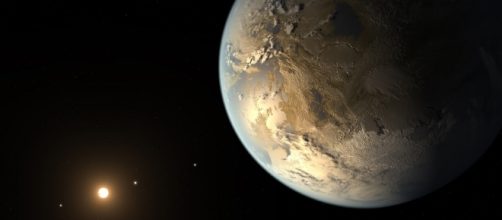NASA has announced that it has discovered seven Earth-sized planets orbiting a star which is just 235 trillion miles away from our solar system. This in cosmic terms makes it our next door neighbor, and this is what makes it such an exciting discovery.
A small group of scientists led by a UC San Diego physics professor discovered this Earth Like Planets. Prof. Burgasser said that the presence of a star with seven earth like planets is a rarity.
Possibility of water in liquid form
The star has been designated as Trappist One and is only 40 light years away from the solar system.
The star is much cooler and smaller than the sun and the planets orbiting the star are much closer than the planets in the solar system. There is a high possibility of the existence of water in liquid form on the planet. This is one of the requisites of the possibility of life on the planet.
The Habitable Zone
The planets are much closer to their parent star still there is a possibility of life. Planets must receive a certain level of heat and radiation from their parent star so that water remains in a liquid state to support life. This distance varies according to the size of the parent star.
Notice the new @GoogleDoodles? It's about the 7 Earth-sized planets we discovered around nearby star! Get the news: https://t.co/G9tW3cJMnV pic.twitter.com/dOHB0bLqXn
— NASA (@NASA) February 23, 2017
This zone for a particular star where there is a possibility of life is known as the habitable zone of Goldie Locks region.
These planets in other stars are known as Exoplanets, and almost 251 such worlds have been discovered by astronomers and a handful of them are within the habitable region.
Why are we seeking alien life
This brings us to the question- why should humankind explore life in an alien world trillions of kilometers away? Many physicists including Stephen Hawking have warned about potentially catastrophic consequences.
One of the underlying causes is survival of human race.
Watch Live: NASA announces discovery of seven Earth-sized planets outside of Solar System https://t.co/4pwkJ1Sr91 pic.twitter.com/XwB1pdbZ14
— Al Jazeera News (@AJENews) February 22, 2017
The resources on Earth are not unlimited, and shortly, humanity will have to look for other worlds for both subsistence and survival.
Scientists are now concentrating on knowing if the planets have atmospheres in them. If yes, then there are chances of first hints of life on the surfaces.

